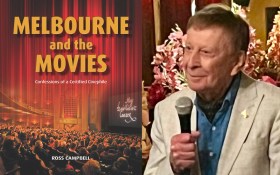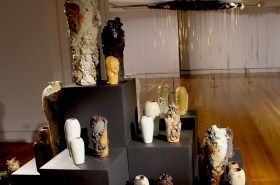Prophet of doom: Frederick Sandys, Cassandra
The common myth is that a Self-managed Superannuation Fund (SMSFs) must divest themselves of these investments by 30 June 2016 or suffer consequences too dreadful to contemplate. The effect of these dire warnings has been, perversely, to drive down the value of these investments as Trustees dump art on to an already fragile market, accepting any value offered to beat the deadline.
There are many rules and restrictions that apply to the SMSF sector which are designed to ensure that these Funds are not used for purposes other than to provide a source of retirement benefits, and only retirement benefits. This is what is referred to as the ‘sole purpose’ test and in the context of investments in art it means that art investments cannot satisfy any other test, such as, does the art provide any other benefit, such as enjoyment? Personally, I think this particular interpretation of the sole purpose test was pushed by the industry funds and the Cooper Review was happy to go along with it.
So what are the now-not-so-new rules?
- The artwork (and other collectibles) cannot be leased to, rented, or used by a related party – that is, a trustee, employer, employee or other associated party. Nothing contentious there.
- Artwork cannot be displayed or stored in the private residence of a related party. That’s sad, but not the end of the world.
- The reasons for the decision to purchase the artwork must be documented and that documentation retained for 10 years – all investment decisions must be in line with the Fund’s documented Investment Strategy. So unless you bought on a whim, on ebay (in which case you shouldn’t be a Trustee of a SMSF), you should have no problem meeting this requirement.
- The artwork must be insured within seven days of purchase – as any prudent investor would.
Based on these quite simple rules the merchants of doom have concluded that artwork has to be stored off-site and that the costs of such storage, along with the costs of periodic revaluations (which applies to all superannuation fund investments) and insurance will vastly outweigh any capital gains and that the investment potential of art will head one way, south.
Well, that turned out to be a self-fulfilling prophecy!
A quick search of the ATO website would have shown that artwork cannot be stored in the private residence of a related party but can be stored in the business premises of a related party, as long as those business premises don’t also form part of the related party’s residence.
In the SMSF environment the Trustee/s, members and employer are the same; so the Directors of the employer company will also be the Trustee/s of the SMSF. Where the employer owns or leases premises there is no reason why the work cannot be stored at those business premises (as I do); or at the business premises of an associate. The only conditions are that the work not be on display – works owned by my SMSF are bubble wrapped and in racks with the rest of my collection, and that the reasons for making a particular storage decision are documented – reasonable storage costs (perhaps none), good security, environmentally suitable, and so on. If you don’t have separate business premises, it shouldn’t be too hard to find alternative storage among your business associates. I know of high value works that are on loan to State galleries which has the bonus of increasing the work’s provenance.
While works may not be displayed, leased or rented to related parties, there is no restriction on leasing or renting works to unrelated parties. Providing the Fund’s assets do not consist solely of art works there could be no suggestion that the Fund is carrying on a business. If a Fund’s assets did consist solely of art works then I think you do have a problem, but you had a problem before these rules came into effect.
To summarise; the art market, and more particularly, the creators have been kicked in the guts, first and foremost by those who should have stepped back from the initial hysteria surrounding the recommendations of the Cooper Review and said ‘hang on a bit…’ I’m not saying those recommendations were particularly sensible or well thought out, and there was a heavy whiff of the politics-of-envy and self-interest about them, but they weren’t beyond the ken of savvy investors and collectors to manage.
I’ve seen the effect this hysteria has had on artists in remote Aboriginal communities and I just conclude ‘so pointless’.





